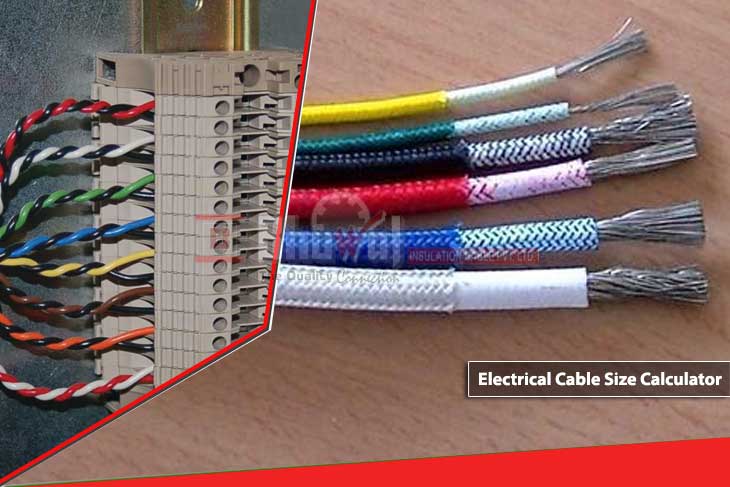There are two main cable sizes in use for lighting in the home. What size cable do you need for your lights? How many fittings are on the circuit? How long does the circuit will need to be? You will need a bigger cable the greater the distance from the supply to the fitting.
Generally speaking, you can run most lighting off a 1 mm cable, but for long cable runs 1.5 mm is a better choice. It gets a little more complicated if you need to fit a two-way switch.
Here’s a quick guide to what size cable you need for your lights.
But First: Electrical Safety!
Before you begin any work on any electrical circuit, make sure to isolate the power supply first.
You can do this by switching off the main power at the consumer unit. Turn off and take out the RCD breaker for the circuit on which you will be working or inspecting.
Put the fuse, or breaker somewhere safe so it can’t be reinstated without you knowing.
Make sure that anyone else in the house is aware of what you are doing. Put a note on the consumer unit to advise that work is going on.
Check the circuit is disconnected using a volt tester. They are not expensive and are a great way to protect yourself from getting a shock.
Sometimes, especially in older houses, there is no guarantee that the power is off even though you have removed the fuse or breaker.
How Do You Choose What Size Cable You Need for Your Lights?
For most, small-scale domestic electrical installations a 1 mm twin and earth cable is the right size for your lighting circuit.
Most homes will have a separate circuit for each floor, and perhaps another dedicated circuit for feature or task lighting.
What is a Twin and Earth cable?
A twin and earth cable will have two PVC sheathed cables and one exposed copper wire. The two sheathed cables will be brown (Live) and blue (Neutral).
The exposed wire will be the earth cable, and it will require a green and yellow sleeve to be fitted wherever it terminates within the circuit.
How Many Lights Can I Run on One Cable?
The rule of thumb that most electrical engineers will recommend is to restrict your lighting circuit to eight light fittings.
Use a breaker or fuse with a rating of 5 or 6 Amps to protect a lighting circuit.
Add up the wattage of the bulbs on the circuit. For a 5-amp breaker 1150W is the maximum, (just over 11 100-watt bulbs) while a 6-amp circuit can handle up to 1380W (nearly 14 100-watt bulbs).
However, it’s always a good idea to leave plenty of room on a circuit and not go for the maximum. This is where the number eight comes in. At a total load of 800 watts (8 x 100-watt bulbs), the circuit will remain comfortably within its working range.
Why Not Go For The Max Capacity?
Electrical circuits, when working to their fullest extent, tend to create heat. Just as a lightbulb gets hot, so does a cable when you draw a large current through it.
While the wattage levels stated should be safe to use its like driving a car at top speed. It’s not a good idea to do it at all times.
Just like a car, we don’t want things to overheat, so it’s always good to build in a good margin of safety. The RCD breaker is a fail-safe, but constant stress will over sensitize a breaker.

What If My Light Fitting Needs a Large Number of Bulbs?
If you have a big, multi-bulb chandelier that requires 400 to 500 watts, it would be a good idea to have it installed on a separate circuit.
Similarly, outdoor lighting for your garden, garage, or driveway, which might also be more powerful, should also be on a separate circuit.
None of these need to be on a cable that is any bigger than a standard 1 mm twin and earth.
When to Use a 1.5 mm Size Cable For Your Lights
A bigger cable does not mean that you can run more lights. The rule of eight remains, and should be respected.
When the light fittings are at a distance from the consumer unit, use the bigger cable. The additional half-a-millimetre is there to manage any drop in voltage over distance.
British Standards (Circuitry and Related Parts of BS 7671: 2008) states that the maximum distance for a lighting circuit is 53 metres. Use a 1.5 mm cable for a circuit that covers the maximum distance.
What Other Cable Sizes Do I Need For My Lights?
Another, more complicated type of cable is a three-core and earth. A three-core cable has different colours for its sheathing. Use it when you require two-way switching i.e., when you need a switch at either end of a flight of stairs.
This cable runs between the two switches. Connect only one of the switches to the twin and earth lighting circuit.
Do I Need Special Cables In My Bathroom?
Electrical regulations in bathrooms are stringent because of the higher level of risk to fittings. All lighting must be enclosed and moisture resistant.
There are no special requirements for the lighting cable. Both 1 mm and 1.5 mm comply with regulations. The key is in installing the correct fittings i.e., a ceiling mounted drop-down light switch.
Top Tip:
If you are planning on making any major changes to the lighting circuit in your bathroom you will need to inform your local authority’s Building Control office. They may send someone out to inspect the works.
What Other Cable Sizes Will I Find In My Home?
The cable used for your power outlets, for the regular domestic sockets in most rooms, is 2.5 mm. Don’t use it for electric lighting as it is too large.
Electric cookers, hobs, and showers all require much heavier cabling on individual circuits with their own dedicated fuses or breakers.

